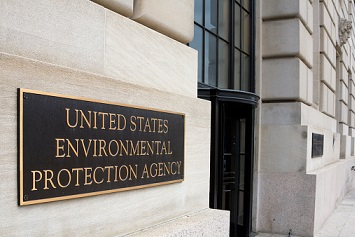The drinking water crisis that began in Flint, Michigan, in 2014 may go down in U.S. environmental history as the classic failure of all levels of government—local, state, and federal—to meet their responsibilities to provide the public with safe drinking water as required by the Safe Drinking Water Act (SDWA) and the federal Lead and Copper Rule (LCR).
Multiple reports about the crisis have been developed by government and other stakeholders. The most recent report by the EPA’s Office of Inspector General (OIG) makes it clear that the EPA’s assertion that the state of Michigan bore the majority of the responsibility for failing to oversee Flint’s water fails to reflect the EPA’s own high level of culpability.
Water Source Switched
The crisis was precipitated when the city of Flint switched its drinking water supply from the Detroit Water and Sewerage Department to the Flint River. Unlike the old source, the new source did not contain corrosion inhibitors to block leaching of lead into the distribution system.
In the months following the switch, residents began to complain about the taste of their drinking water. Testing in various locations, including the homes of residents, found lead levels in some cases exceeding 100 parts per billion (ppb). Under the LCR, if water has a 15-ppb lead presence, water systems must take specific actions to eliminate lead in their product. In January 2016, the EPA issued an emergency administrative order to the state and the city of Flint, instructing them on their responsibilities under the SDWA and the LCR. In its report, the OIG states that as of May 2018, the state and city have completed some actions and are working on others.
Primacy
The EPA is responsible for implementing the SDWA. However, the law allows the Agency to grant primacy to states; a primacy state is authorized to run the SDWA program. At various times during the Flint crisis, the EPA’s Region 5 office stated that it was not its role to intervene because Michigan is a primacy state. But the main thrust of the OIG’s report is that the SDWA and the LCR authorize the Agency to order a primacy state to take corrective action to ensure safe drinking water if the state is not meeting that obligation. For example, says the OIG, the LCR authorizes EPA regional administrators to review a primacy state’s treatment determinations and issue alternate federal determinations if the EPA finds that the state has failed to issue a determination by the applicable deadlines or has abused its discretion in a substantial number of cases or in cases affecting a substantial population.
Lack of Urgency
Generally, the OIG provides a list of inadequate actions or nonactions on the EPA’s part, including:
- A lack of urgency by Region 5 in requesting a legal opinion from EPA headquarters on the region’s authority to intervene in the crisis. Headquarters eventually provided an interpretive memo to the region, but the memo did not address the situation in Flint, which delayed the Region’s ability to act.
- Despite known economic challenges in the city, EPA Region 5 staff did not identify Flint’s source water switch as an event that could impact the city’s ability to comply with the SDWA.
- Region 5 did not have effective risk assessment processes that would have alerted the region to growing issues in Flint.
- Region 5 and the city of Flint worked together on an agreement that would require Flint to implement corrosion control treatment. But according to the regional administrator, the problem was not presented in a way that conveyed the gravity of the situation, which delayed the EPA’s formal intervention.
- During the water crisis, Region 5 leadership did not employ many of its SDWA authorities as the state continued to debate LCR requirements and residents continued to drink potentially contaminated water.

The OIG report also includes multiple instances of Michigan’s contribution to the overall poor performance by government. For example, the Michigan Department of Environmental Quality did not provide Region 5 with accurate information regarding corrosion control treatment, says the OIG.
“Flint drinking water contamination continued, in part, because the public health protection authorities of the SDWA were not used effectively,” says the OIG. “The EPA and its regional offices must understand their oversight tools and authorities, and not be reluctant to use them to protect public health.”
Verifying State Verification
The OIG report contains nine recommendations for the EPA. The Agency agreed to undertake eight of the recommendations but disagreed with the OIG’s recommendation that the EPA establish controls to annually verify that states are monitoring compliance with all LCR requirements. Instead, the EPA said it planned to develop an approach or a pilot for implementing a national compliance monitoring and enforcement oversight program for the Drinking Water Program, as appropriate, by June 2019.
The OIG’s report is here.

